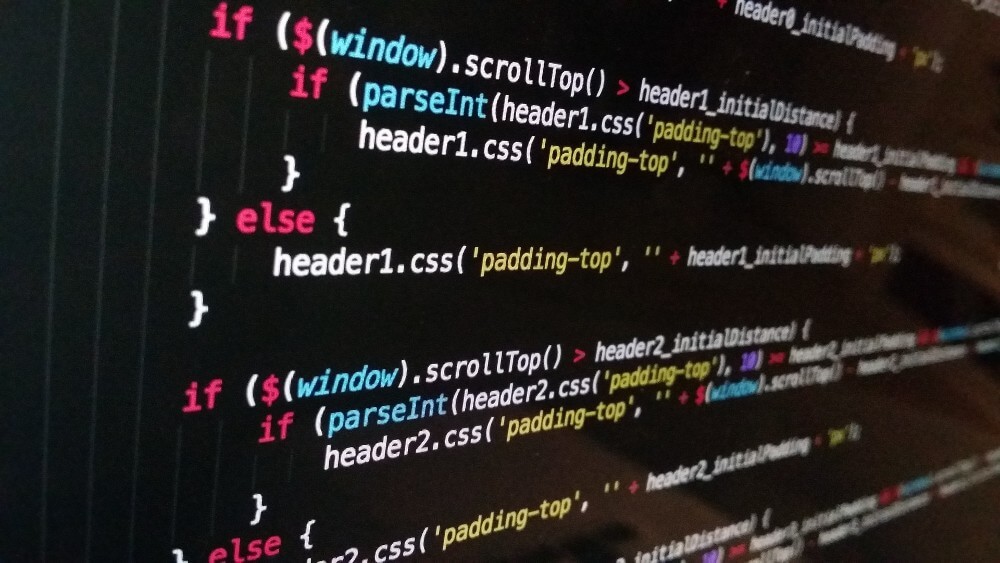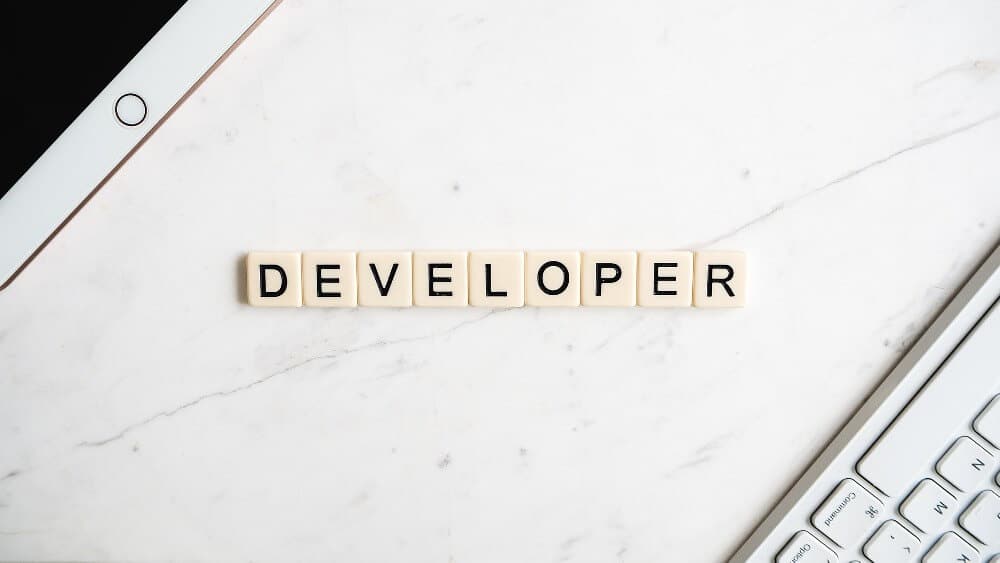Hello reader, Welcome to this informative guide on Full Stack Developer Interview Questions!
In this article, we will cover various interview questions for both experienced and entry-level Full Stack Developers.
After reading this article, some of your doubts will be cleared, and you will get the guidelines to adequately prepare for that interview and snag that Full-Stack Developer Job.
Here are some topics that we will focus on in this article:
- Full Stack Interview Questions For Entry-level Developers
- Full Stack Interview Questions For The Experienced Developers
Here we go!
Introduction

Preparing for a Full Stack Developer Job interview can be hectic, and feeling anxious about facing the hot seat is expected.
The Full Stack Development role happens to be one of the most popular and demanding professions in the tech industry.
Full Stack Developers are not only knowledgeable in Front-End and Back-End Development, but they are also well-versed in various skill sets and knowledge.
This profession requires high levels of responsibility, making it one of the most important careers in the tech industry.
Employers are willing to pay top rates for professionals with the proper skill set, and this is why if you are in the Full Stack Development Career, you must own your future and adequately prepare for top jobs.
After writing an impressive resume and cover letter that will get you the interview, answering the interview questions and getting them right is the next step to securing that high-paying position with a reputed organization.
Here are the common Full Stack Developer Interview questions divided into two:
- Full Stack Interview Questions for entry-level Developers
- Full Stack Interview Questions for the experienced Developers
Full Stack Interview Questions For Entry-level Developers

1. What skills will you require to develop a project from scratch as a Full Stack Developer?
As a Full Stack Developer, you must be well-versed in the following:
- Knowledge of programming languages such as Java, PHP, Python, C++, Ruby, and so on
- Front End technologies such as HTML5, JavaScript, CSS3, etc. and familiarity with third-party libraries such as Ajax, JQuery, ReactJS, Angular, etc. are also vital
- Knowledge in development frameworks such as Django, Spring, PHP, Spring Boot, Hibernate, Mybatis, and others is also important
- Knowledge of Database Management System technologies such as MongoDB, MySQL, SQLite, and Oracle will be vital in helping you understand basic aspects of caching mechanisms such as Memcached, Redis, Varnish
- Possessing design ability is vital for every Full-stack Web Developer, and they should primarily be well-versed in the principles of prototyping and UX/UI design
- Server-side experience is also key, especially experience with NGINX or Apache, and knowledge of Linux will be vital when it comes to administering servers
2. Which are the commonly used programming languages by Full Stack Developers?
Full Stack Developers use various programming languages, so every professional must be fluent in various languages, especially those for front-end designing and back-end fixing.

But, because Developers work with different technologies and applications, they must be well-versed in the most common languages like Python, PHP, Java, C++, and so on.
3. What does CORS (Cross-Origin Resource Sharing) mean?
This is a browser mechanism that enables web pages in a single domain to gain controlled resource access in other domains.
This enables scripts that are run on a browser client to interact with and gain access to resources from other origins.
This allows extension and improved flexibility to the Same-Origin Policy (SOP).
SOP limits the ability of a website to access resources outside its source domain.
Suppose a JavaScript app intends to make a call to an API (Application Programming Interface) that runs on another domain it will be blocked due to SOP.
A CORS policy was, in this case, applied to circumvent restrictions enabled by same-origin policies.
But, if a website’s CORS policy is not properly configured, it becomes susceptible to cross-domain attacks such as CSRF (Cross-Site Request Forgery).
4. Can you explain Pair Programming?
Also known as programming in pairs or pairing, pair programming is where two Programmers work together using one machine.
The development process involves a situation where one Programmer is involved in writing code, while the other Programmer is the observer who ensures that all the written code is correct, proofread, and spell-checked and gives direction on the next step.
These two Programmers can also swap roles, and such improved collaboration results in higher quality outcomes, better code, and efficient knowledge exchange.
5. Explain Callback Hell
Also known as Pyramid of Doom, Callback Hell is a common anti-pattern in asynchronous programming code (functions running simultaneously).
This is a slang term that defines a large number of functions or nested “if” statements.
Callback hell is simply a scenario where multiple asynchronous functions exist.

These functions rely on one another, resulting in quite a mess, especially if various callback functions are nested in many layers.
The use of callback functions results in code that is difficult to read and maintain, resulting in a pyramid-like structure.
This makes debugging difficult because identifying the application’s flow becomes hectic hence the term “callback hell.”
6. Do you know the latest Full Stack Development Trends? How do you keep yourself up-to-date on the industry’s current trends?
With businesses requiring emerging technologies to thrive, their needs will dictate the type of Developers they hire, but industry experts maintain that Full Stack Developers must be knowledgeable about the following trends:
- The rise in frameworks and libraries such as progressive apps, ReacJs and VueJs, mobile web development, and real-time web apps
- Enhancements to JavaScript
- Compatible extensions emerging
As for how to stay updated on new trends, explain to the Interviewer how you learn from friends in the same industry, colleagues, and learning through online resources such as webinars or forums.
You can also showcase personal projects where you have used your newly acquired skills.
7. What is Long Polling?
Long polling is simply a web application development method used to push information from servers to clients as quickly as possible.
Long polling maintains a connection between the client and the server enabling the client to make a request to the server and receive feedback.
The connection closes only once the server has sent the data back to the client or when it reaches a timeout threshold.
8. Explain the difference between REST( Representational State Transfer) and GraphQL
REST and GraphQL help in data transfer over internet protocols, including HTTP, but they do so differently.
The stack differences between the two are as follows:
- GraphQL is a Query Language for APIs that allows declarative data fetching and allows clients control over the data to retrieve from API, while REST is an API design architectural style that describes a set of constraints to create web services
- GraphQL stands out for its high predictability, enabling the sending of requests to your API and getting predictable results, which improves their stability – REST, on the other hand, depends on the HTTP and URI methods used, which makes API consumers unsure of what to expect after calling the endpoint
- GraphQL can help with API security, but the security features are not as efficient as the REST security features – As much as GraphQL helps in integrating data validation, users must decipher how to apply the authorization and authentication measures
- REST, on the other hand, can be used to enforce API security in various ways
- GraphQL supports JSON format while REST support not only the JSON format but YAML, JSON, XML, HTML, and many more
9. Explain what CI (Continuous Integration) is?
This is the process of automating and integrating change in code into a single software project a couple of times a day.
The main reason for this DevOps process is to allow Developers to combine their code changes into a central area where the builds and automated tests can run.
Automated tools are useful in asserting the new code’s correctness before integration occurs.
A source code version control is a vital part of the CI process.
10. What do you understand by multithreading?
A thread is an independent process unit in execution, and when multiple threads are executing in a process simultaneously, this is known as multithreading.
In short, it is the way an application multitasks.
Multithreading is very important because computing resources are minimized and more effective, and the application has an improved response time because there are no blocked requests.
11. What are the advantages and disadvantages of using “use strict”?
In ECMAScript5, a strict mode exists and allows you to run a function or an application in a strict operating mode.
Running on strict mode means certain limitations are in place, but the result is a robust, clear, and accurate code.
More advantages are:
The Advantages
- Using strict mode makes errors resulting in JavaScript engines getting difficult to optimize but easy to fix, and in most cases, strict mode code executes quicker than the non-strict mode code
- Serious errors are prevented when the coding mistakes are quickly detected
- An error is prevented when an “unsafe” action happens
- Any complicated features are disabled during strict mode
- The process of writing secure JavaScript becomes easy
The Disadvantages
- Most necessary functions are unavailable with “use strict”
- Zero access to function.caller or function.arguments
- Errors are encountered when different scripts done in different strict modes are linked together
12. Explain some uses of Docker
Software Development is riddled with the most annoying problems, especially when working with different environments across different platforms and machines.
Docker comes in handy when it comes to isolating your applications from your infrastructure, a crucial process when it comes to quick software delivery.

Developers run their applications into executable components that feature all the Operating System libraries and dependencies required to run the applications in any environment.
Still, the code has to run through various environments to reach production, and this is where Docker makes code development and deployment easy because it enables a consistent environment from the development stage to the production stage.
The primary role of Docker is simplifying configuration and still offering the same functionality without the baggage of virtual machines.
13. What is an event loop in Node.js.?
The event loop in JavaScript allows asynchronous programming.
In JS, every task happens on a single thread, but via smart data structures, it is possible to create that multi-threading illusion.
Thanks to the event loop, any async work is handled by a queue and a listener.
When the async function requires execution, the main thread relays it to another thread and allows V8 (the Javascript engine) to keep processing its code.
In the event loop, there are various stages such as pending callbacks, timers, closing callbacks, idle, polling, and checking with various FIFO (First-in-First-Out) queues.
14. Can the load time of a web application be decreased?
Yes, there are various ways to reduce load times for web applications.
- You can do so through image optimization, where you reduce the image file size
- You can keep JavaScript and CSS in external files for simple maintenance and considerably reduce application load time
Embedding JavaScript and CSS in HTML documents causes them to get downloaded every time the HTML document is loaded; remember that browser caching is not done, making the HTML document larger.
- You can also reduce load time by reducing redirects because too many redirects prolong the loading time
HTTP requests and responses are delayed every time a page redirects which is why ridding the page of unnecessary redirects will definitely reduce the load time significantly.
- Loading CSS and JavaScript files asynchronously enable you to load multiple files simultaneously and boosts the site performance
- Decrease load time by minifying HTML, JavaScript, and CSS
Optimizing how files load will enable the pages to load quickly, and you can do so by getting rid of any unneeded characters, spaces, and comment to considerably reduce the file sizes.
15. What is dependency injection?
Dependency Injection is a design pattern meant to implement the Inversion of Control (IoC).
Objects that are dependent are created not within the classes but are made available to classes in various ways.

Dependency Injection has three types of classes involved which are:
- Client Class (dependent class)
- Service Class (dependency)
- Injector Class
There are more interview questions for the entry-level Full-Stack Developers, but the above should help you prepare and, in the process, stumble upon more questions.
Full Stack Interview Questions For The Experienced Developers
Here are the Full Stack Interview Questions ideal for you to prepare if you are an experienced Full Stack Developer:
1. What is the difference between blue/green deployment and rolling deployment?
The Blue-Green deployment strategy creates two different infrastructure environment, which are blue and green.
A blue environment has the older code (old version) while the green environment (production) has the new version of code, which is the latest.

Always there exists only a single live production environment at a time.
As for the Rolling Deployment Strategy, this is the deployment strategy where the old versions of an application are all replaced with new versions by a complete replacement of the infrastructure on which they run.
2. What Is Inversion Control?
Inversion of control is simply a design principle used in software engineering.
Various types of controls are inverted into an object-oriented design to create loose coupling.
“Controls” in this case means other responsibilities that a class has other than its main responsibility.
The responsibilities include controlling the application flow and controlling object creation.
Inversion of Control enables classes to be loosely coupled, resulting in easier testing and maintenance.
3. What is referential transparency in functional programming?
Referential transparency in functional programming is simply the key differentiating factor.
An expressional is only called a referential transparent when it can be substituted by the corresponding value it computes or vice-versa without zero effects on the program’s result.
4. What is a connection leak in Java, and how can it be fixed?
When a connection is opened and forgotten, it is called a leak, and every time this occurs, the connection is never available for reuse.
Connection leaks happen when certain database requests don’t close properly, resulting in the connections getting abandoned and closed permanently.
Connection leaks are common experiences for Java Developers when they are using Connection pools.
If a section of code doesn’t close a connection well, a connection will leak from the pool every time that section of code is executed.
When the leak keeps happening, the pool will eventually run out of connections, a situation called Pool Exhaustion, resulting in the hanging of the application.
The connection leak problem can be fixed by simply closing the connection and focusing on any error handling code.
5. Explain what promise is and explain its states
Promises are used as alternatives to callbacks in JavaScript and are often used to handle asynchronous operations.
Apart from handling various asynchronous operations, promises are capable of a more efficient error handling procedure than callbacks.
Promises are a better option for reading code efficiently, especially when that code executes multiple asynchronous operations.
The Promise object showcases the result of an asynchronous operation and the resulting value.
The Promise object is usually in any of the following states:
- Pending: The initial state which is neither rejected nor fulfilled
- Fulfilled: Shows the operation as successful
- Rejected: Shows the operation as failed
6. Define Restful API and its usage
Application Programming Interfaces (APIs) are simply sets of rules and protocols that define how software programs and devices communicate with one another.
Those APIs that follow the design principles of representational state transfer are called REST APIs.
REST APIs could also be called RESTful APIs, and Developers use them to create requests and gain responses through the HTTP request.
REST API is instrumental in mapping data from a cloud platform to a data warehouse or vice versa.
7. Explain what a MEAN stack is
MEAN is an acronym for MongoDB, ExpressJS, AngularJS, and Node.js.
This is simply a group of JavaScript-based technologies instrumental in developing web applications.

They might be a group of different technologies but is all based on the JavaScript language makes JS a common factor.
The MEAN Stack is a great option when building dynamic websites and applications, and it also happens to be quite a user-friendly stack.
Building web-based prototypes have never been easy with such a free and open-source stack.
8. How do you keep a bot from scraping API which is publicly accessible?
If the data found in the API is accessible to the public, then it is quite impossible to prevent data scraping.
However, there is a way of minimizing bot activity by throttling or rare limiting.
Rare limiting effectively prevents a particular device intent on making unlimited requests within a certain period.
When requests are made beyond the set limit, an HTTP error resulting from many attempts is displayed.
It is crucial to indicate more about the device than the IP address because the IP address is not unique to each device and could bar the whole network from accessing the API.
9. What project have you worked on, and which technologies did you use? Why did you choose those technologies?
In this question, the interviewer simply wants to know what kind of methodology you are using as a Full-Stack Web Developer, and they want to gauge whether you can choose the appropriate tool set.
As you explain your reasons for choosing a certain toolset, make sure you are specific and not vague.
Demonstrate how you developed both the front and back end of your web application.
It is okay if you have more experience on one side of Web Development compared to the other, but it is also important that you show the interviewer that you can handle both ends of the application.
10. What was the best debugging or implementation you have done in the past?
The interviewer is asking this question to understand the type and complexity of your past projects.
Specifying the problems you experienced and the actions you took to solve them is essential.
To look better, you can highlight the lessons you learned from the experiences.
Those are the few questions the interviewer will likely ask you if you are an experienced Full Stack Developer.
Conclusion

We have looked at the above Full Stack Developer Interview Questions and answers for experienced and entry-level Full Stack Developers.
Most of these questions cover most areas, are quick, insightful, and offer key cues that are crucial in the technical interview process.
As you prepare for that dream job, explore other relevant Full Stack Developer Questions, maintain a positive attitude, and exude confidence.
Remember that the recruiters don’t expect you to know everything, whether you are experienced or an entry-level Developer.
But, if you prepare well and are enthusiastic, you will stand out from the other interviewees.
Don’t forget to showcase your excellent organizational skills and precision in what you do.
Above all, maintain honesty and transparency; lying in an interview will give the worst impression and cost you the job.
Good luck with your interview.
FAQs

How do I prepare for a Full Stack Interview?
Remember to do your homework and look at relevant possible questions and the correct answers for them.
Know that whatever the Interviewer asks, stick to the plan: understand the question, think of the solution, explain it well, and execute it.
That is how it is done.
How do I answer the “Tell me about yourself” question during a Software Engineer interview?
When answering this question, it would help to focus on the job title and consider what makes you unique.
Begin with an overview of your career and mention past career highlights, complete with examples for illustration.
Then finish with future goals.
How many types of Full Stack Developers exist?
There are various Full Stack Developers, and you could be any of them.
There is the MEAN Stack (MongoDB-ExpressJS-AngularJS-NodeJS), LAMP Stack (Linux, Apache, MySQL, PHP), MERN Stack (MongoDB-ExpressJS-ReactJS-NodeJS), LEMP Stack (Linux, Nginx, MySQL, PHP) and full-stack Python, Django, Elixir, Java or Ruby on Rails.
Prepare for the interview accordingly.
Which is the most sought-after Full Stack?
The most popular tech stack is the MEAN Stack ( MongoDB-ExpressJS-AngularJS-NodeJS) thanks to its many applications, which also make cloud application development possible, while the best web applications are also created from this stack.
Many employers will be eyeing your skills if you are a MEAN Stack Developer.
Is Full Stack Development a great career choice?
This career is one of the most satisfying and productive careers in the tech industry.
It is not only about Front-End and Back-End Development but involves many skill sets to make you a competent Developer.
Most companies are willing to pay top dollar for competent Full Stack Developers.
How do you answer the why should I hire you question?
Highlight all the skills and experience you have that are relevant to the job position.
Mention past career highlights and outstanding achievements.
You can also mention your soft skills, especially those required for the position.
Let them not doubt that you are the best for the job.
Can you say that you are nervous in a Full Stack Developer Job interview?
Confidence is an excellent part of preparedness, and this job requires it, especially in your skills application.
Saying you are nervous will not work in your favor and might make you more anxious.
It will also not make a good impression on the interviewer so avoid saying that.









